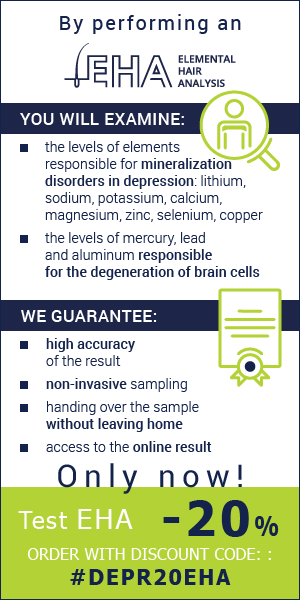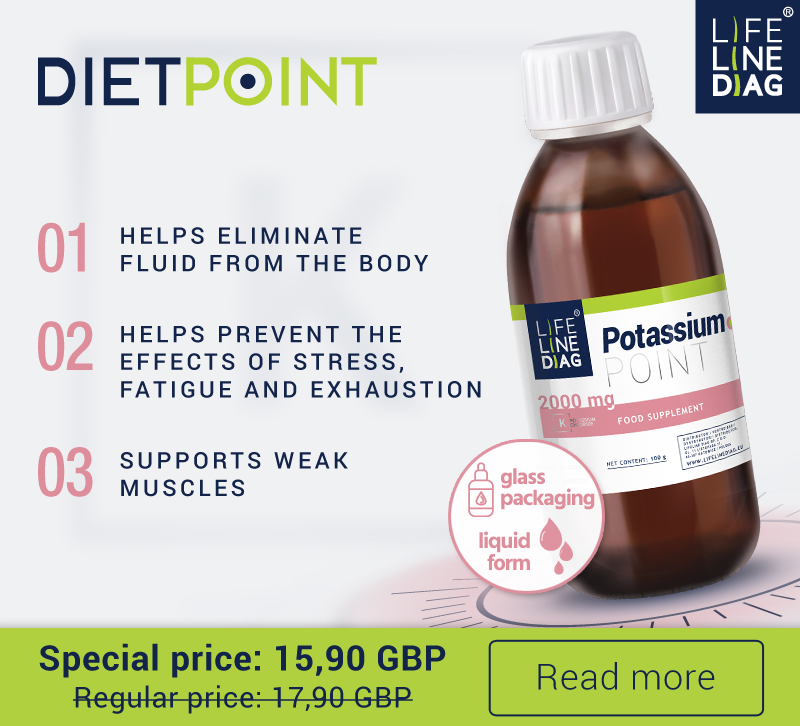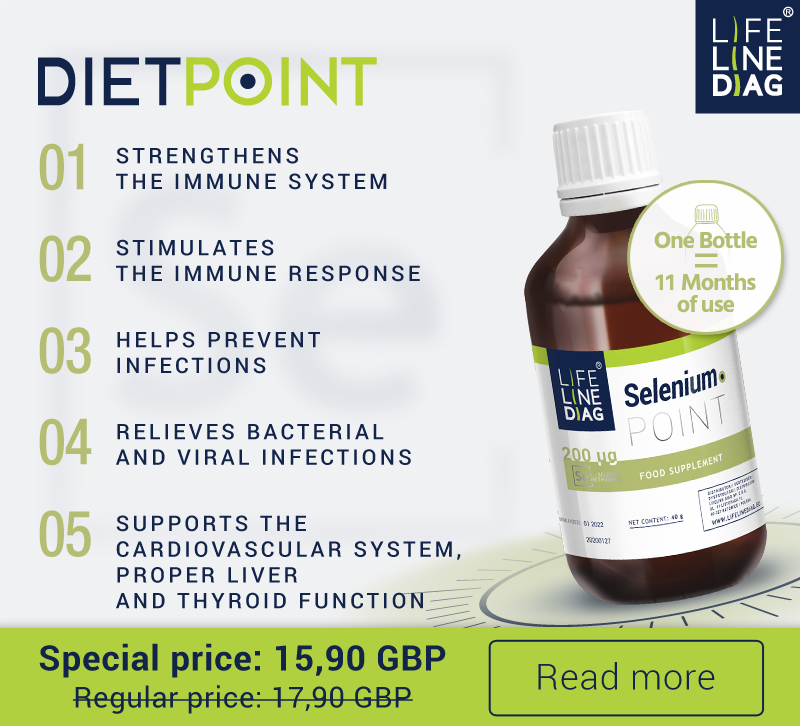
According to the World Health Organization, in 2020 depression will become the second-highest cause of disability in the world behind back and joint pain. There are 350 million sufferers worldwide, of whom already over 2.5 million are in Great Britain alone. This is the best evidence that depression is a huge problem. At the same time, it’s a great business opportunity for pharmaceutical companies that earn hundreds of millions selling anti-depressants.
Depression usually begins innocently with the stress and anxiety that everyone experiences on a daily basis. Unfortunately, not everyone is able cope with mental stress, particularly of the type that’s constant and intense (for the given patient). In such cases, instead of the usual blues or a temporary feeling of sadness, a serious mood disorder – depression – can develop.
Many metabolic pathways are activated in the body under stress. There are numerous biochemical processes that can be disturbed (if the body isn’t functioning properly). Therefore, depression is often seen in the company of other disorders, such as chronic pain or intestinal problems, recurrent infections, insulin resistance, and even cancer processes. Unfortunately, this is often a vicious circle. Chronic, autoimmune, metabolic and heart diseases increase the risk of depression, which greatly reduces the quality of life, and this in turn can cause all of the above-mentioned diseases.
Unfortunately, one in three patients with depression don’t respond to conventional antidepressant treatment, and so are unable to break free from the vicious circle they find themselves in. Differences in the perception of depression by both classical and functional medicine don’t help in solving this problem. Classical medicine focuses on diagnosing symptoms, and eliminating them using antidepressants. On the other hand, functional medicine looks for the causes of depression and aims to reduce them using stress control, restoration of normal sleep patterns, and learning about the patient’s genetics and epigenetics. In the fight against depression, functional medicine doesn’t use pharmaceuticals, which only mask the symptoms, but focuses on changing the factors causing the mental disorder in the first place. These include improving the relationship with the environment, increasing physical activity, changing eating habits, detoxifying the body, strengthening the gut and boosting immunity. It’s difficult to argue with the fact that functional medicine’s holistic approach to depression is much broader.
It’s worth noting that over the past several decades, knowledge on stress has increased significantly. Initially, it was only associated with the nervous and endocrine systems, because the hypothalamus–pituitary–adrenal axis is the main pathway leading to the development of a stress response. However, when looking at depression, focusing solely on the nervous and endocrine systems could be compared to extinguishing a fire in a gas cooker without first turning off the gas supply. In other words, it’s treating only symptoms without finding and eliminating the root causes.
In the 1990s, the scientific field ‘psychoneuroimmunology’ arose; it broadened the definition of stress to include another element – the immune system. Currently, stress is perceived even more broadly as a neuroendometabolic problem – NEM (NeuroEndoMetabolic) Stress Response – which is a complex process that in addition to the nervous, endocrine and immune systems also includes cardiological, detoxification and bioenergetic processes. Functional medicine also covers social relations in the concept of stress. An adequate response to stress can only occur when someone’s relations with the environment are proper.
The NEM stress response system is a combination of organs and systems into a complex, functional network. The NEM system is a kind of mesh protecting against the harmful effects of stress, and it’s made up of many components. It can be compared to electrical circuits in a building. A circuit has many switches that are responsible for its various parts and at the same time are interconnected and determine their interaction.
Depression is a disease with symptoms similar to those caused by excess inflammation in the body. In both cases, there is decreased joy of life, excessive drowsiness, social withdrawal, as well as poor concentration, oversensitivity to pain and lack of energy. The similarity of the symptoms of depression and those of excess proinflammatory cytokines features often in the specialist literature.
Inflammation is a direct and natural defence response to infection, which can be triggered by stress. Sometimes, however, the inflammation is so strong that it leads to the destruction of body tissues, which is also seen in depression. Hence, treatment of depression should largely consist of anti-inflammatory measures.
Natural ways of reducing inflammation through diet are very promising. Positive effects are seen from using omega-3 fatty acids with a strong anti-inflammatory effect, avoiding lectins, and taking resveratrol, curcumin and liquorice. This type of diet is also used for autoimmune diseases, in which inflammatory processes are also quite severe.
Copper stimulates oestrogen production, while zinc stimulates progesterone production. Disturbances on this axis leading to excess copper mean that we have too little progesterone, and are therefore unable to calm down, which intensifies the effects of stress. Oestrogen dominance is very prominent nowadays, as evidenced by an increasing number of women struggling with polycystic ovary syndrome or breast cysts. Excess oestrogen increases copper retention in the kidneys, and this disturbs the liver’s oestrogen detox. To break this vicious circle, you should avoid xenoestrogens and help detox them by supplementing with helpful substances. Sulforaphane (broccoli extract), calcium D-glucarate and DIM will help in this. The amount of copper should also be limited, e.g. by decreasing the amount of zinc. However, many women increase their copper levels by using contraceptive IUDs, while others reduce the natural level of zinc by using oral contraceptives. The problem isn’t their use, but ignorance of the consequences of this use. You can only maintain the body’s mineral balance if you’re aware of all the sources of absorption and factors that remove elements from the body.
In summary, we can conclude that in depression, the main problem is excess copper and disturbances in the methylation process. To fix this, the correct mineral balance must be restored. Magnesium, zinc, copper and selenium are needed for this – of course, in the right amounts and proportions. Methylation minerals in specific, appropriate doses aimed at supporting the methylation process are currently available on the market.
In the case of depression, the body needs the right amount of zinc and magnesium to produce serotonin and dopamine. Zinc increases dopamine, and copper, with which zinc is strongly associated, degrades it. If there’s excess copper in the body, excessive dopamine degradation occurs. You feel a clear surge of energy, mood swings and anxiety, all while lacking motivation, having inhibited rational thinking and decreased concentration. Hence, low dopamine levels are one of the causes of depression.
People suffering from mood disorders often take zinc. However, excessive zinc supplementation adversely affects copper and iron levels. That’s why in the case of depression, it’s good to top up these three elements with a specially made supplement that contains them in the right amount, or planning supplementation with a specialist who’ll adjust the doses of individual elements to the given patient. To this end, it’s also helpful to determine the exact level of elements found in the body, e.g. by using an EHA test. It should be borne in mind that in the case of depression and all other medical conditions, therapy should be approached comprehensively.
The production of dopamine and serotonin also requires biopterin, whose proper level can be lowered by inflammation and aluminium (factors that block the enzymes responsible for its production). Biopterin deficiency causes a problem with neurotransmitter production. In the case of depression, it’s very important to determine the level of aluminium in the body.
Another element that should be checked is calcium, which causes hyperactivity and excessive, uncontrolled excitement. The penetration of calcium into cells in too high amounts and, as a consequence, the death of neurons, is caused, among other thing, by the presence of mercury. To ensure an adequate level of calcium, its proportion to magnesium should be tested and evaluated.
Other important pairs of elements whose levels and interactions should be checked in the presence of mood disorders and excessive excitement are lithium and sodium (a pair in which hyperactivity causes lithium deficiency), as well as sodium to potassium, whose disturbed relationship may also indicate impaired behaviour control.
When discussing hyperactivity, we’re talking about abnormal tryptophan transformation. A healthy body converts tryptophan to serotonin, until we feel happy, and then to melatonin, which affects sleep. However, due to stress and/or infection, the tryptophan metabolic pathway shifts towards the kynurenine pathway. This results in the production of vitamin B3, which is designed to add energy required by the body during stress or infection. Unfortunately, the intermediate metabolite in the production of vitamin B3 is the neurotoxic quinolinic acid, which causes excessive excitement and oxidative stress, while damaging tissues. Hence, it’s known that living in constant anxiety causes irreversible damage to brain tissues.
The disturbed tryptophan degradation pathway – the kynurenine pathway – which blocks serotonin production, also has a direct effect on bowel function. The intestines produce 70-80% of serotonin. Its deficiency leads to various digestive problems and dysbiosis. A way of inhibiting the abnormal tryptophan processing pathway can be to increase the above-mentioned omega-3 fatty acids in the diet, as well as use non-steroidal anti-inflammatory drugs.
A healthy body alternates between being stimulated using glutamate, e.g. to activate memory, and then calming down using GABA. Unfortunately, if there is a mineral imbalance, this process is disturbed. The copper to zinc ratio tells us this. If there is a deficiency in the latter, there’s no conversion of glutamate to GABA. We also need magnesium, which is another GABA receptor activator.
The question is, what can we do if we or someone we love suffer with depression? First of all, it’s necessary to diagnose whether the patient’s mineral balance hasn’t been disturbed. The basis of this will be to determine the ratio of zinc to copper, then calcium to magnesium, and finally sodium to potassium, as well as lithium levels. A good diagnostic method that we can use for this is the EHA test, which is an analysis that determines the concentration of elements from a hair sample. The test also shows what type of metabolism the patient has. In the case of depression, it will of course tend to be slower rather than faster. In this case, to help the patient conserve energy, we use a diet high in vegetables, low in protein and low in carbohydrates, plus appropriate supplementation. It’s also very important to perform tests for intestinal dysbiosis and food hypersensitivity. These tests are needed to commence treatment of depression. Testing the methylation status, checking for proinflammatory cytokines, toxins and mycotoxins, hormonal and neurotransmitter tests may also prove helpful in therapy. Let’s remember that a holistic, functional approach to depression can help free the patient of the condition.
Dr Anna Romaniuk
 Doctor of natural sciences, microbiologist, immunologist and nutritional psychologist. She specialises in the diagnosis and therapy of gut microflora disorders in children on the autism spectrum, autoimmune and allergic diseases, including atopic dermatitis. She applies a holistic approach to immune system disorders and neurodegeneration processes, including methylation processes and gut flora disorders. In cooperation with the Institute of Microecology and the Medical University of Warsaw, she conducts scientific research in the field of intestinal flora dysbiosis in children on the autism spectrum. Currently, she shares her knowledge with parents and anyone involved in therapeutic processes, including neuro speech therapists and sensory integration therapists; she also consults the results of elemental analysis of patients’ hair at the Lifeline Diag laboratory.
Doctor of natural sciences, microbiologist, immunologist and nutritional psychologist. She specialises in the diagnosis and therapy of gut microflora disorders in children on the autism spectrum, autoimmune and allergic diseases, including atopic dermatitis. She applies a holistic approach to immune system disorders and neurodegeneration processes, including methylation processes and gut flora disorders. In cooperation with the Institute of Microecology and the Medical University of Warsaw, she conducts scientific research in the field of intestinal flora dysbiosis in children on the autism spectrum. Currently, she shares her knowledge with parents and anyone involved in therapeutic processes, including neuro speech therapists and sensory integration therapists; she also consults the results of elemental analysis of patients’ hair at the Lifeline Diag laboratory.


















